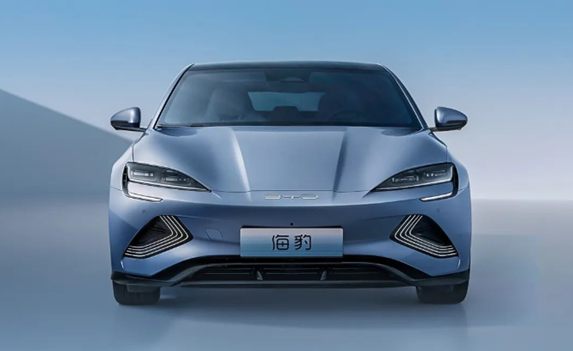The BYD Seal, the second model from BYD's Ocean-themed EV family, is expected to hit the market on July 18, according to a local media outlet.
Presale of the model began on May 20. With four trim levels offered, the BYD Seal features a presale price range of 212,800 yuan to 289,800 yuan ($31,720-$43,190).

Riding on BYD's e-platform 3.0, the BYD Seal inherits the design language of the Ocean X concept. The slim headlights are inspired by the eyes of a seal. The closed-off grille and the front hood bulges accentuate a sporty essence of the vehicle.
With a sedan-coupe design, the BYD Seal features double creases on the side and pop-out door handles, which partly contribute to a super low drag coefficient of 0.219Cd.
At the rear, the small tail wing looks similar to a ducktail, further enhancing the sporty atmosphere of the vehicle. The taillight cluster adopts an in-vogue design that allows a light strip to run across the car's width.
The BYD Seal measures 4,800mm long, 1,875mm wide, and 1,460mm tall, with a wheelbase that spans 2,920mm.
The cabin features a wraparound design with a 12.25-inch full liquid crystal dashboard and a 15.6-inch adaptive tablet-style touchscreen, which carries BYD's latest DiLink intelligent in-car system.
The Seal comes with both rear-wheel drive (“RWD”) and all-wheel drive (“AWD”) versions. Notably, the AWD version has a CLTC-rated range of 650km and can achieve 0-100km/h acceleration in only 3.8 seconds, while the long-range RWD one features a CLTC range of up to 700km.
The BYD Seal is the first production model to utilize the company's CTB (cell-to-body) technology, which was launched on May 20.
The CTB technology can further integrate the battery cover and the body floor together, making the original battery pack's “sandwich” structure evolve into a "sandwich" structure for the complete vehicle. Thus, the power battery system is not only an energy part, but also a structural part. Such integration can simplify the car body structure and production process.
BYD said the body torsional rigidity of the CTB-armed all-electric models can easily exceed 40,000 newton-meter per degree, doubling compared to a conventional design.